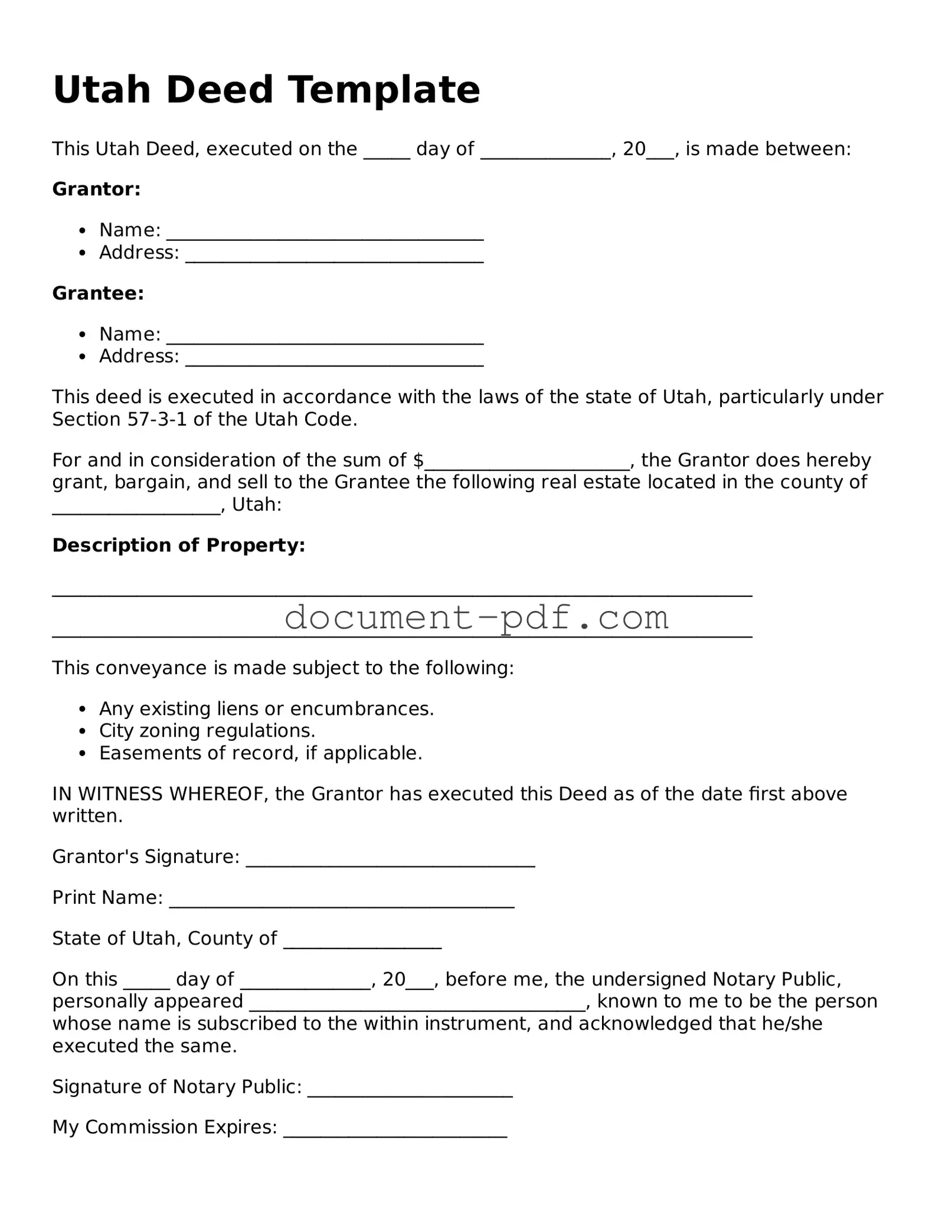Utah Deed Template
This Utah Deed, executed on the _____ day of ______________, 20___, is made between:
Grantor:
- Name: __________________________________
- Address: ________________________________
Grantee:
- Name: __________________________________
- Address: ________________________________
This deed is executed in accordance with the laws of the state of Utah, particularly under Section 57-3-1 of the Utah Code.
For and in consideration of the sum of $______________________, the Grantor does hereby grant, bargain, and sell to the Grantee the following real estate located in the county of __________________, Utah:
Description of Property:
___________________________________________________________________________
___________________________________________________________________________
This conveyance is made subject to the following:
- Any existing liens or encumbrances.
- City zoning regulations.
- Easements of record, if applicable.
IN WITNESS WHEREOF, the Grantor has executed this Deed as of the date first above written.
Grantor's Signature: _______________________________
Print Name: _____________________________________
State of Utah, County of _________________
On this _____ day of ______________, 20___, before me, the undersigned Notary Public, personally appeared ____________________________________, known to me to be the person whose name is subscribed to the within instrument, and acknowledged that he/she executed the same.
Signature of Notary Public: ______________________
My Commission Expires: ________________________
